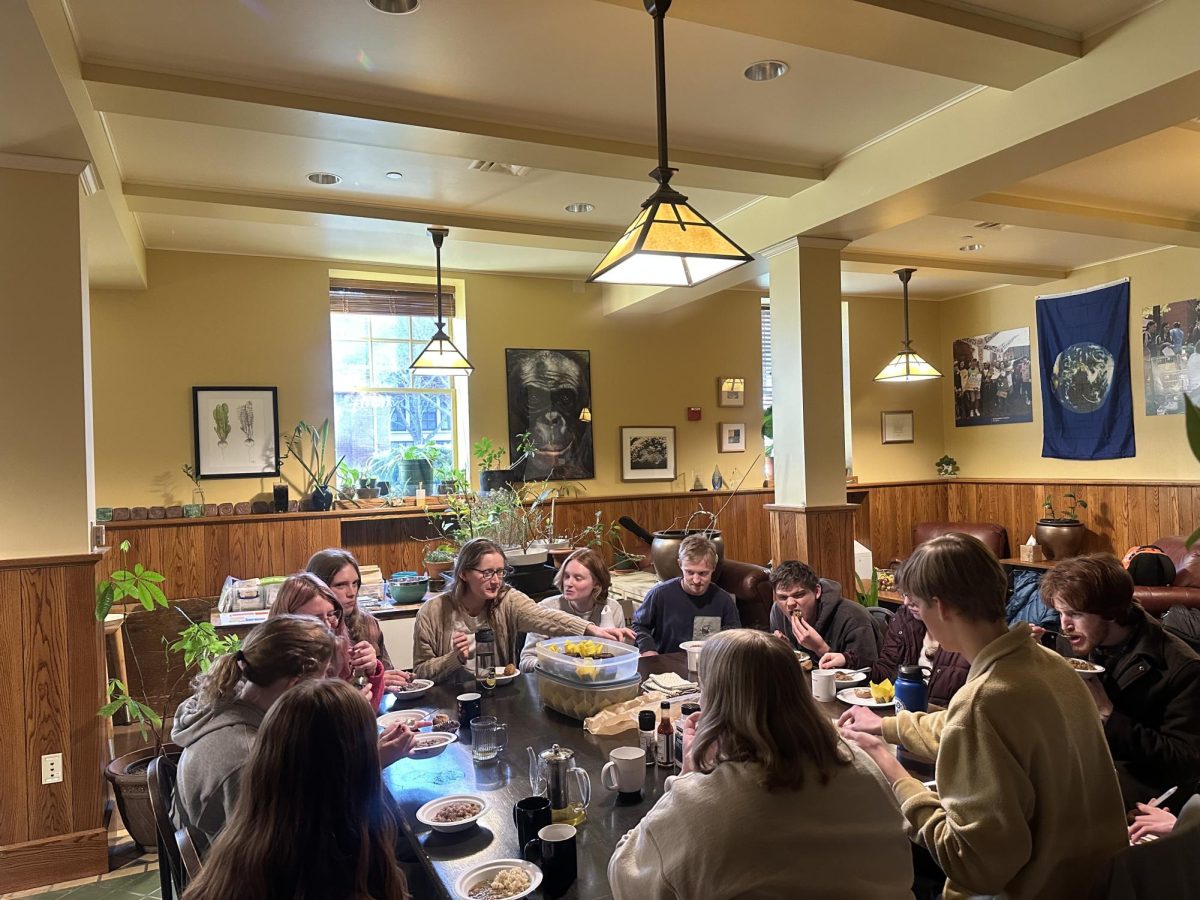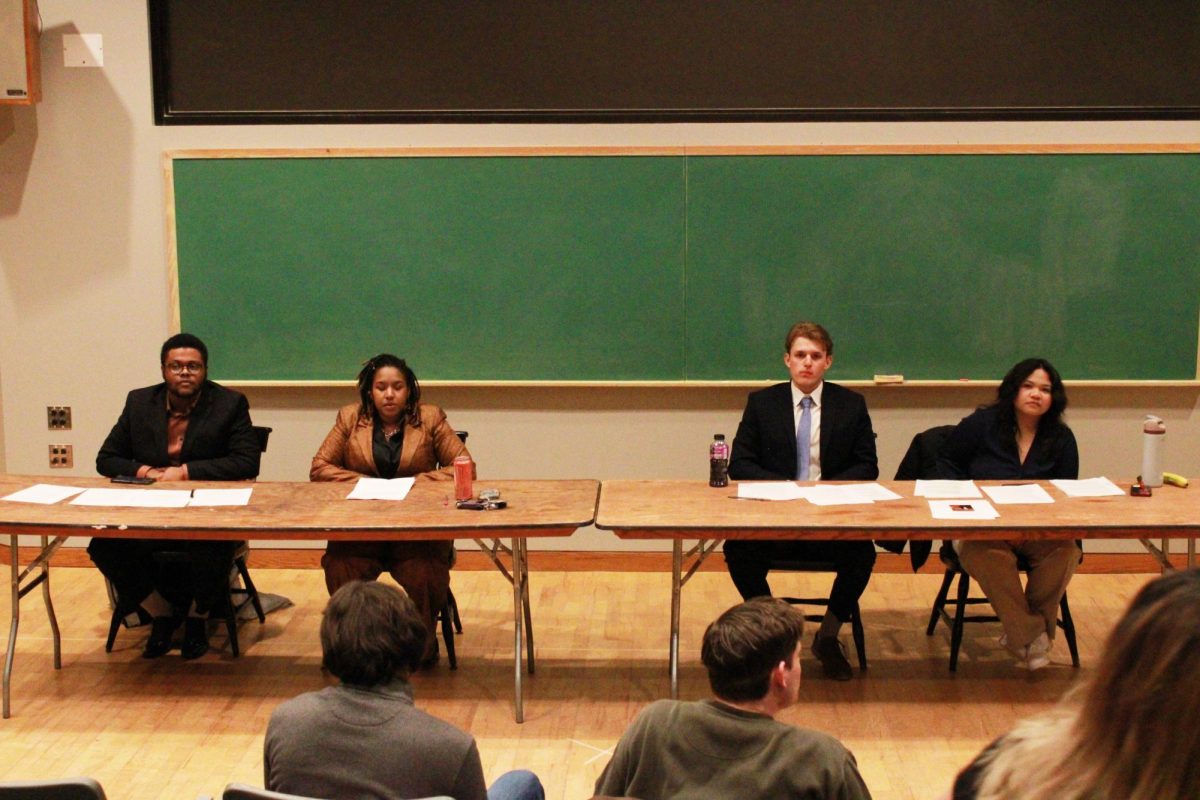By JESIKA TIXI
Contributing Writer
tixij@allegheny.edu
Students from more than 80 colleges and universities participated in XL Dissent, a protest against the Keystone XL pipeline, on Sunday, March 2. The goal was to assemble the largest youth climate civil disobedience act that the US has ever seen. Before protesting on Sunday, participants were required to attend nonviolent, direct action training.
As we arrived at Georgetown University to the sound of MGMT’s “Kids” I couldn’t help but think about youth. Youth and its crucial importance in shaping our future, everything as a collective generation that we do now lays the groundwork for what is to come. Once we are adults we are bystanders in a world that newer generations with their continuous developments have shaped for us. Youth, collectively, have immense amounts of power that could move mountains or even large pipelines.
More than 1,000 people came out to protest the Keystone XL pipeline last Sunday, voicing their disapproval in efforts to convince President Barack Obama and Secretary of State John Kerry to reject the project. The majority of the protestors were students. Amongst this driven crowd marched 26 Allegheny students, including myself. The march began at Georgetown University where we met with hundreds of energetic students who were ready to protest.
“I think XL Dissent is a symbol for youth power and activist power, it shows that there is still a passion from the people to have their voices heard: heard over big money, mega corporations, and over world leaders,” said Zach Cramer, ’15.
As we marched the streets of Washington, D.C., we caught the attention of onlookers with chants such as “Show us what democracy looks like, this is what democracy looks like.” Some applauded and some even joined us. We briefly stopped at John Kerry’s house then proceeded to Lafayette Park and listened to several speakers some of which included: young activists and representatives from communities that would be impacted by the Keystone XL pipeline.
“XL Dissent is the youth taking action, projecting our voices, and making ourselves heard about an issue we feel strongly about,” said Katy Click, ’16. “We will not idly sit by. We are the people and we have power. Even if it ultimately has little to no impact on the decision at least we took action.”
Protesters proceeded to the White House where 398 protestors fastened themselves to the White House fence and remained there for more than 5 hours, boldly singing and chanting as the D.C. Park Police took them away one by one.
If approved the Keystone XL pipeline would carry approximately 830,000 barrels of oil from tar sands located in Alberta, Canada to the Gulf Coast of Texas. The Keystone pipeline has been an ongoing project since February 2005, which has been broken down into four phases, three have already gone into operation and the final phase, phase IV, which is the Keystone XL pipeline, is awaiting approval from the president.
So, why does this all matter?
Oil spills happen all the time, more often than we’d like to think, and have detrimental impacts. Less than a month ago the Mississippi River was closed down because of an oil spill that happened when an oil tank car crashed whilst transporting the crude oil.
Will transporting oil through a pipeline reduce the likely hood of oil spills? Not quite. March 29, 2014 would mark the one year anniversary of Exxon Mobil’s pipeline burst which was responsible for an oil spill near Mayflower, Ark. Local residents say they continue to suffer from side effects such as dizziness, headaches and nausea despite the year that has passed.
Extraction of oil sands will not only increase greenhouse gas emissions, which are already known to be a cause to global warming, but harm local ecosystems and surrounding residents in the process as well.
Last March the State Department released a 2,000-page draft report that rejected the expected environmental risks of the Keystone XL pipeline. When the report was released one important detail was left out, the same experts who helped draft the report had previously worked for TransCanada, the company looking to build the Keystone pipeline. An important detail that was purposely left behind, hidden actually.
Plenty of issues are to consider upon the approval of this pipeline, like the Keystone XL pipline’s impact on Native Americans and indigenous Canadians. It is reported that 100 miles of the pipeline that pass through their lands have the potential to damage sacred sites and locations with cultural value, a major concern which indigenous populations have openly expressed and past protests as well.
“XL dissent means a greener, more sustainable future,” said Melissa Mattwig, ’17. “It also means the ability to work towards the most important goal every inhabitant on this planet shares, being able to use this planet in a responsible way.”
Speculations whether the Keystone XL pipeline will make the United States oil-independent continue to grow considering the U.S. calls for 10 million barrels of imported oil a day. Or whether the oil will remain in our borders at all and who benefits from this pipeline the most considering TransCanada is its official owner. CEO of TransCanada, Russ Girling says that the pipeline will create thousands of jobs and stimulate our economy. In response, Obama admitted that it will create 2,000 temporary jobs during the construction of the pipeline, and roughly 50- 100 permanent jobs in “an economy of 150 million working people”.
Last July, Obama stated that he “would reject the Keystone XL pipeline if it increased carbon pollution” or “greenhouse emissions,” but the decision on the Keystone XL pipeline continues to be prolonged.
Allegheny student feedback from participating protestors and supporters has been positive.
“I am invigorated and happy to have been one of the thousand who showed up and marched,” said Paige Missel, ’14. “Youth are generally seen as voiceless and uniformed, and I think XL Dissent was a way to show that that notion isn’t the case.”
Nathan Malachowski, ’14, president of Students for Environmental Action, has been attending protests since his sophomore year and expresses how it is an emotional tie to his college career.
“It is my last one at Allegheny College. Seeing how it affected younger members, as it affected me, makes it very meaningful,” said Malachowski.

Allegheny students were joined by students from more than 80 colleges and universities at XL Dissent in Washington D.C., a protest against the Keystone XL pipeline.








